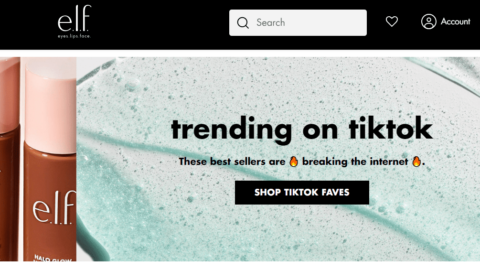A primary concern for retailers and merchandisers planning to invest in social channels is how to effectively integrate commerce to extend cross-channel engagement. They are asking the question: Will I be able to demonstrate an ROI from social media? Many companies have initiated participation in the social realm by building Facebook and Twitter pages, but they have yet to formulate a blueprint for brand monetization. In the end, retailers need to determine how to drive conversion through social media. With Facebook commerce, or F-commerce, becoming an important new selling channel, the retail community is challenged to cash in on this potential “pot of gold.”
During a recent webinar titled “Strategies to Monetize Social Media for Manufacturers and Retailers,” Sahir Anand, VP and Principal Analyst, and Greg Belkin, Research Analyst of Aberdeen Group’s banking and retail sector, addressed the issues and concerns around making the business case for social media investment.
The webinar content centered on research that demonstrates the current focus of retailers’ social media tactics. According to an Aberdeen Research survey of 1,500 companies, 75% are cross selling and up selling to current customers, while 81% are trying to lure in new additions to their consumer base. Because a majority (67%) of companies are not yet measuring the impact of their social media campaigns, retailers and merchandisers can’t evaluate which communication tactics are effective. As a result, customers’ voices are being lost in translation and sometimes not even being heard, as reported in the study titled
Social Media ROI: Customer Engagement, Brand Interactivity, and Revenue.
Customers continue to increase their time spent and focus on Facebook and Twitter. In fact, 42% of shoppers claim they have experienced a shift in the way they want to be marketed to, and 35% said social media is more prominent in their every day lives, according to the Social Media ROI report.
Group Buying Takes Off
Further validating these social trends, new research conducted by Social Shopping Labs, comScore, and Shop.org found that consumers primarily seek deals, coupons, product information, customer reviews and current trends or ideas via social networks. The 2011 Social Commerce Study: Consumer Shopping via Social Media also reported that group buying is a budding area poised for continued growth. More than one third of consumers who have made a group buying purchase spent as much as $100 total — and men are more likely than women to have spent $250 or more on a group buying site.
Group-buying sites like Groupon, LivingSocial and Gilt continue to gain traction but remain in an infancy stage, as there is still room for widespread adoption. According to the survey, eight in 10 (82%) of online shoppers are aware of group-buying sites, though only 19% of survey respondents have actually made a purchase through one of the sites. Those who do leverage group-buying sites appear to be enthusiasts, as the majority of consumers (57%) have spent more than $100 through these sites to date.
“Many shoppers are aware of group-buying sites like Groupon and LivingSocial, but haven’t yet been compelled to make their first purchase,” said Peter Leech, founder, Social Shopping Labs. “As these sites gain momentum and spread to more cities around the country, retailers have an opportunity to experiment not only with established sites but also group-buy promotions on their own Facebook pages and web sites.”
Aberdeen’s Anand further explained the top tactics retailers are employing to cater to these consumer demands, The highest-rated priority, according to the survey, is emerging marketing channels. “At least a third of manufacturers are investing in cross-channel marketing on a consistent basis, not only to work with retailers, but to develop their own channels,” he said.
Tips For Mining ROI From Social Commerce
Channel Intelligence Co-Founder and EVP Alan Fulmer provided insight on how companies can increase and keep track of social commerce key performance indicators, including the quality of customer insights, quantity of new leads, number of comments and frequency of postings. Fulmer offered the following four components of an effective customer-centric social media strategy:
- Engage Like Oprah: Listen and respond to all comments and criticism, and take time to understand users’ perspectives.
- Care Like A Boy Scout: Make your brand be seen as a real, caring and breathing organization.
- Entertain Like Seinfeld: Endear, have a sense of humor and create a fun, compelling experience for site visitors, whether it’s through Facebook or Twitter.
- Educate Like Dumbledore: Provide necessary information about products and openly answer questions. Most importantly, create an open forum to spark conversation between customers.
It it is vital for retailers to manage brand strength and reputation through the social channel with help from analytics. Since recommendation is a key driver of adoption and selling, retailers must deliver effective communication with their audience.
“Social commerce isn’t only about being able to sell when you have a captive audience,” Belkin said. “On a social web site…essentially it is about the buyer getting information through a social site on how effective merchandise is and how the company will utilize direct customer feedback for their business.”
To learn more about how to more effectively monetize social media, view the archived webinar here. For more insights on the 2011 Social Commerce Study: Consumer Shopping via Social Media, download it here.












